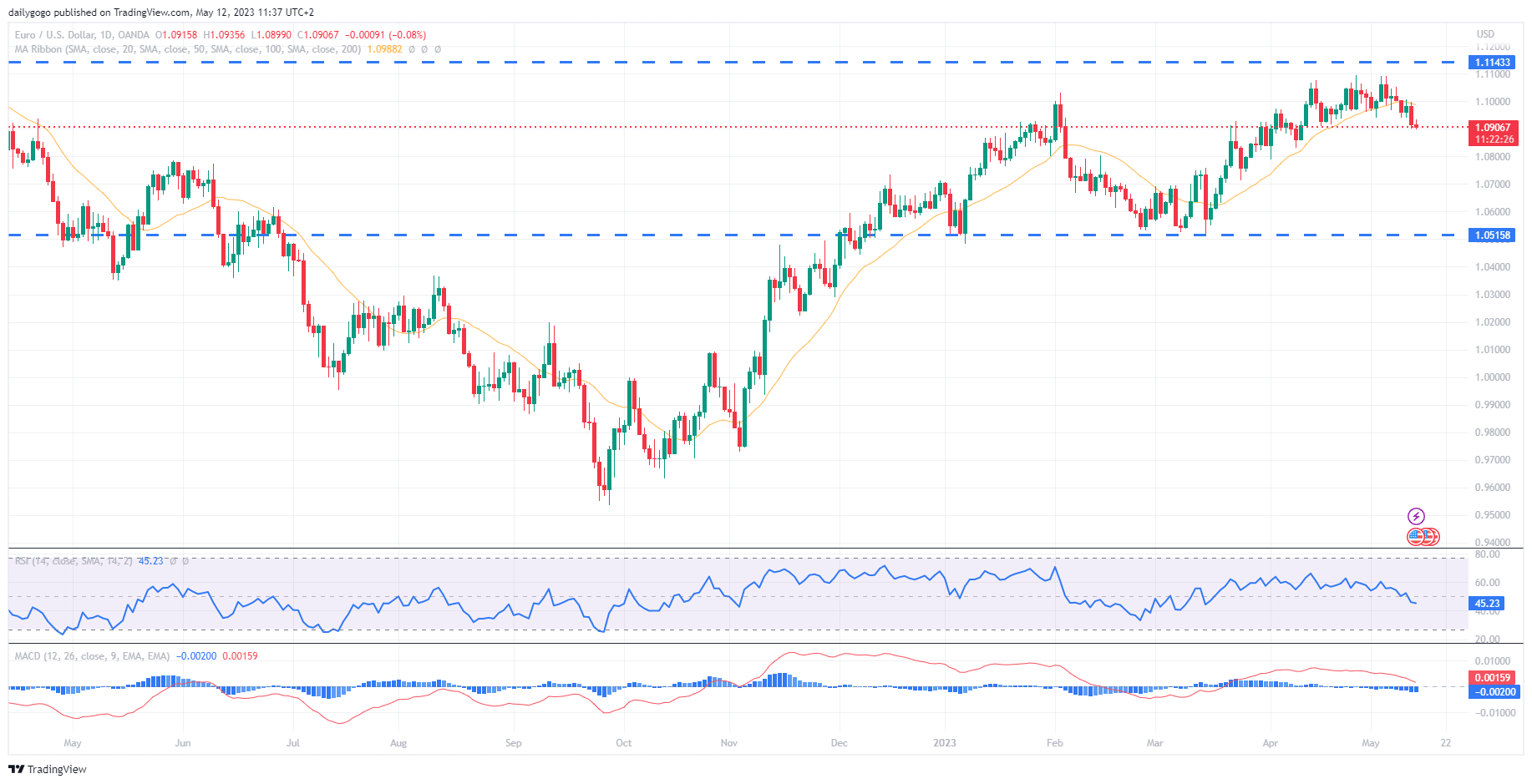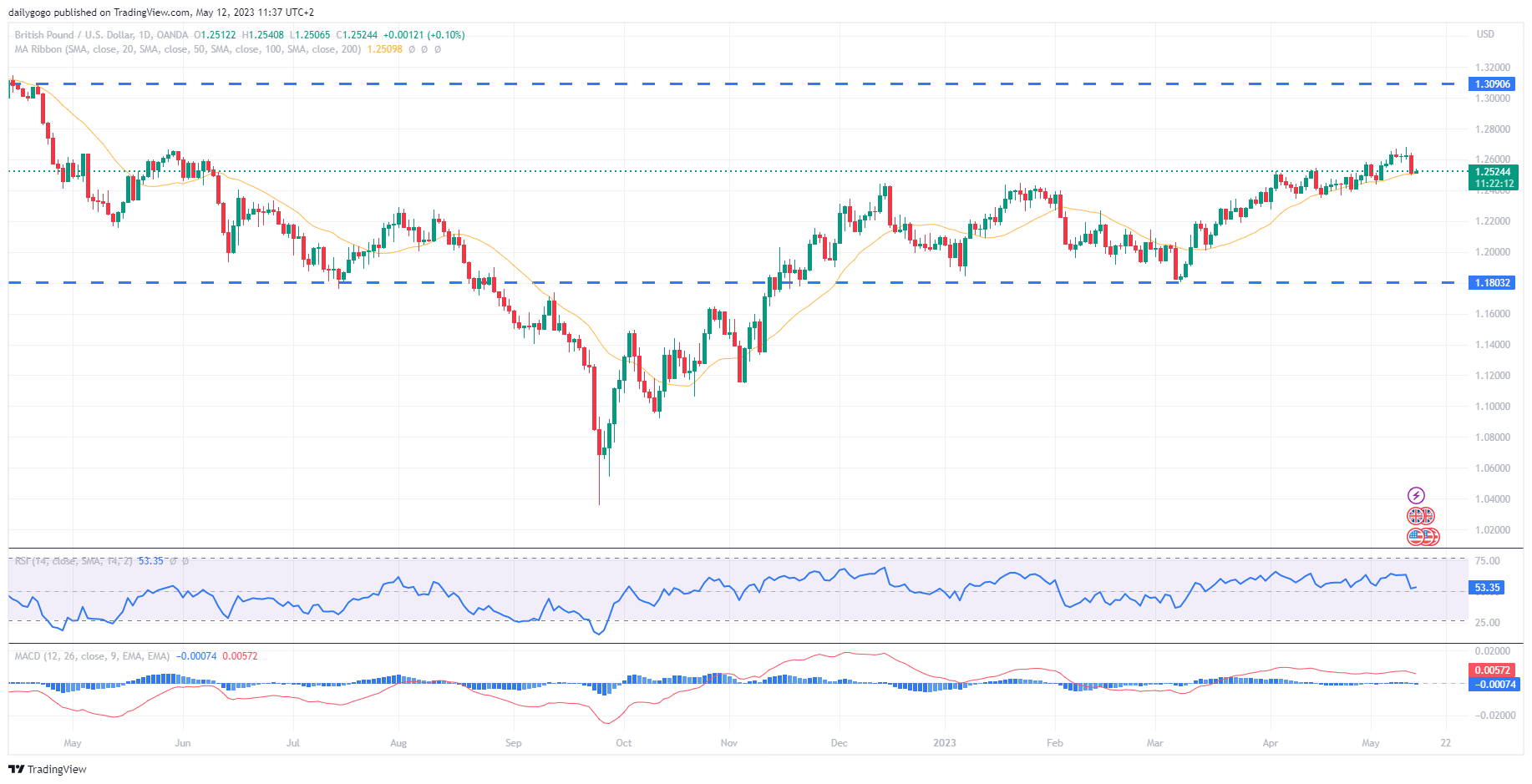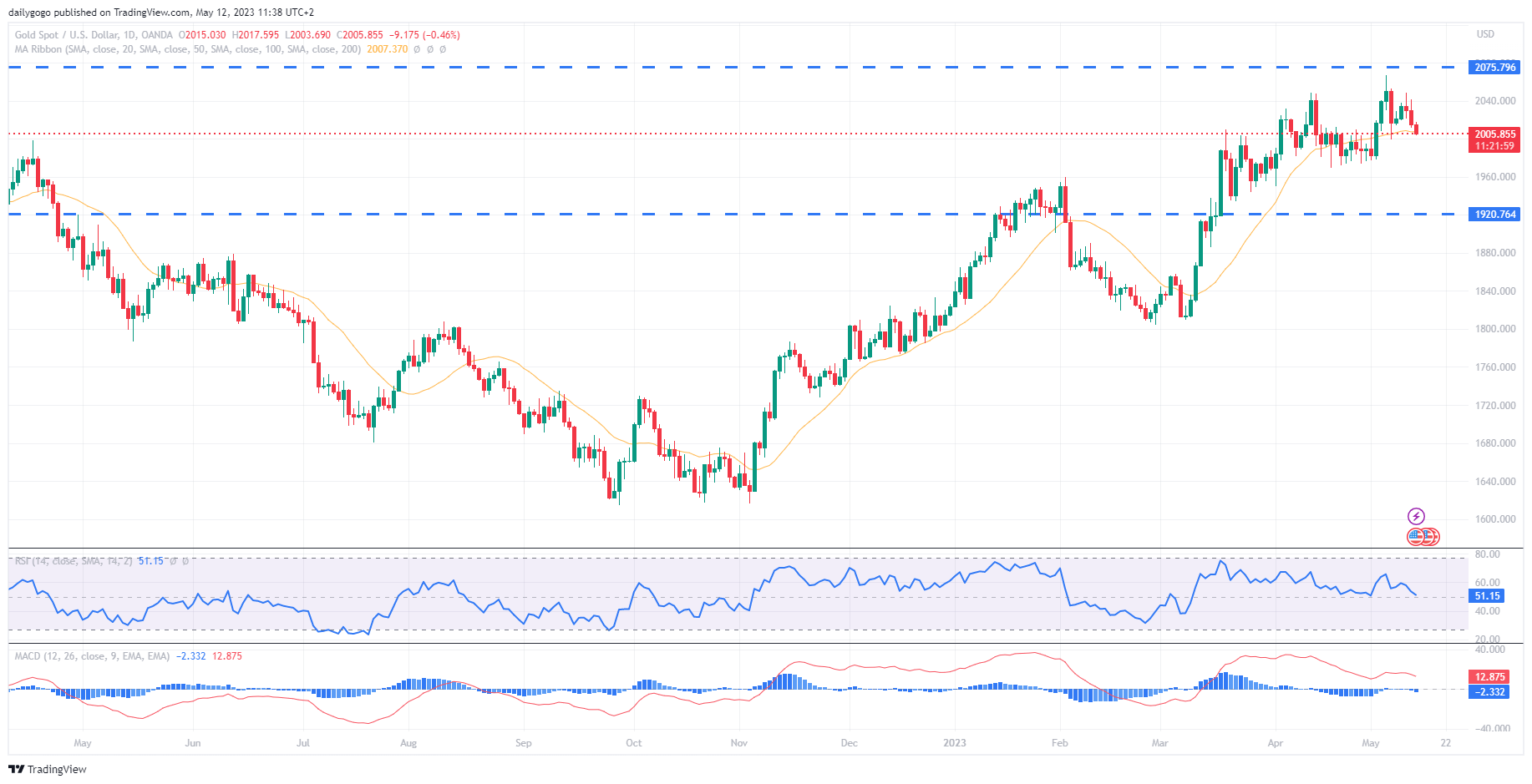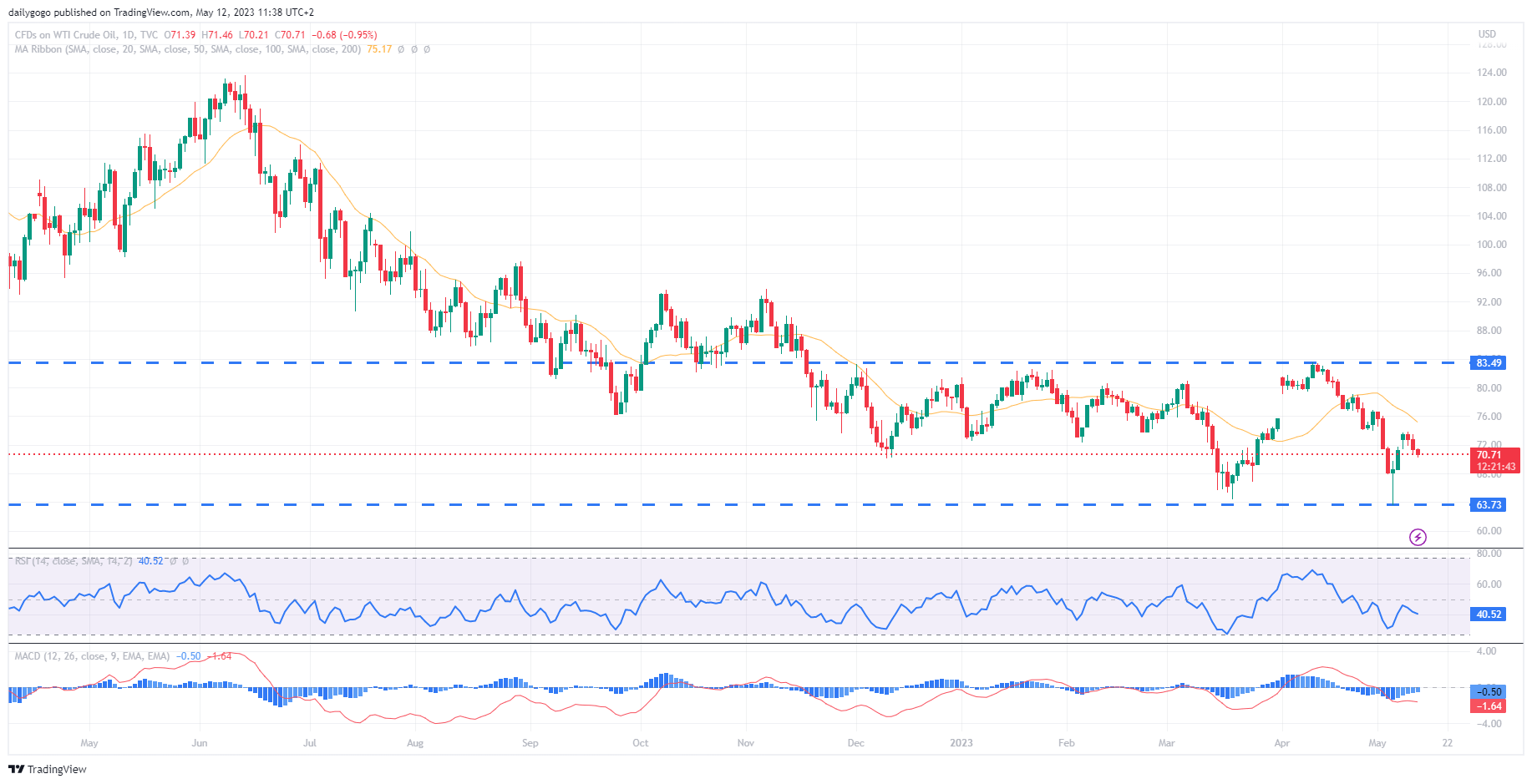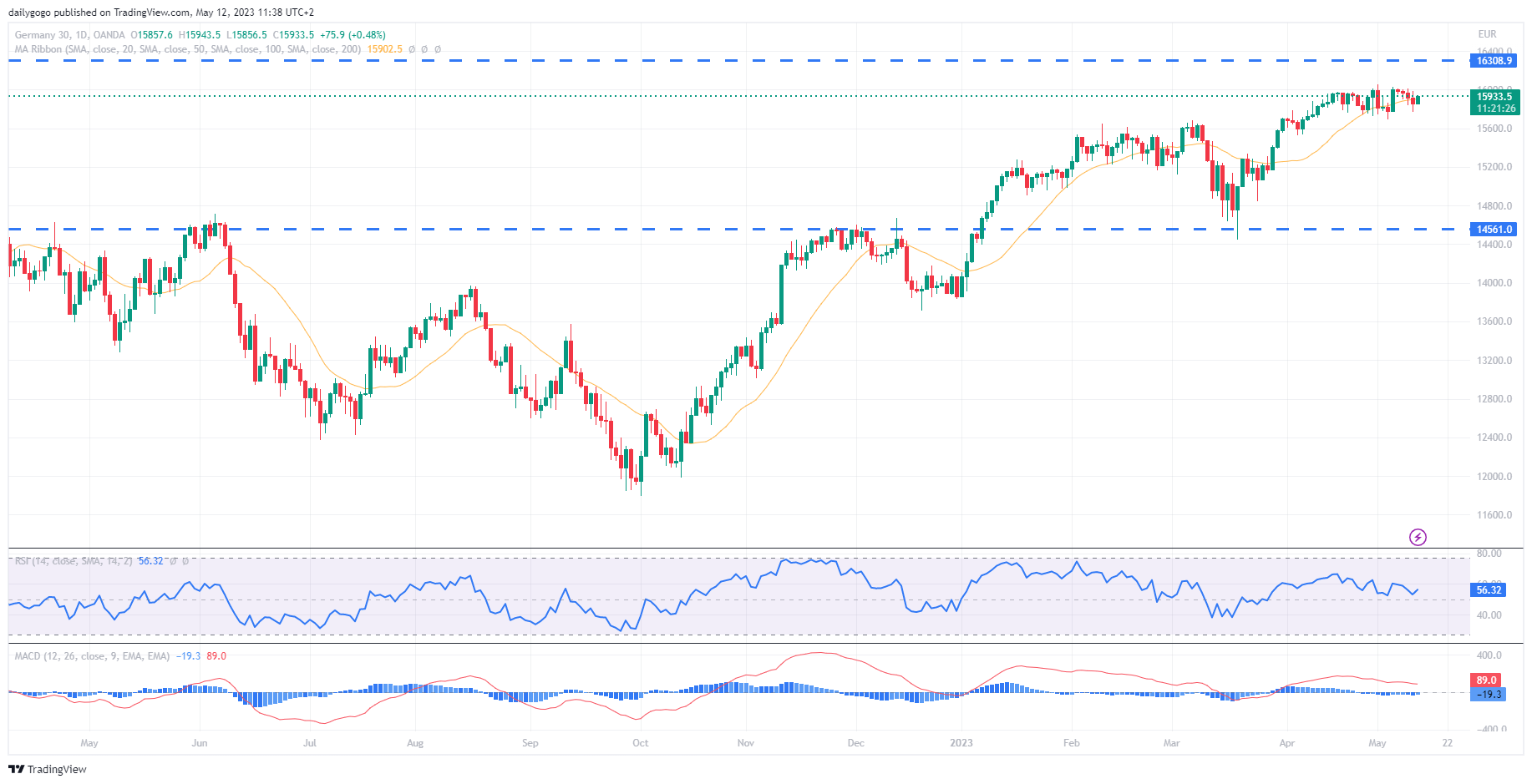EURUSD
- EUR/USD increased by 0.2% to 1.0930 this morning, attempting to test the 50% Fibonacci level from January 2021.
- Inflation remained high in France and Spain, according to data released.
- The DXY, which tracks the dollar against six other currencies, traded 0.1% lower at 101.785.
- A meeting between U.S. President Joe Biden and top lawmakers on the debt ceiling has been postponed, raising concerns about the U.S. federal government running out of money to pay its bills.
- This week, the DXY is set to gain just under 1%, ending a two-week losing streak.
Closing statement: Investors should continue to monitor the progress of the debt ceiling discussions and their potential impact on the U.S. dollar, as well as any further inflation data that may affect the EUR/USD exchange rate.
GBPUSD
- GBP/USD rose 0.18% to 1.2532, recovering after the release of first-quarter U.K. growth data, which showed a 0.1% growth despite a sharp drop of 0.3% in March.
- The Bank of England increased interest rates by 25 basis points on Thursday, marking its 12th consecutive interest rate hike as it aims to address double-digit inflation.
- The U.S. dollar edged lower in early European trade on Friday, surrendering some overnight gains.
- Data released on Thursday showed an unexpected increase in new claims for unemployment benefits to a 1.5-year high last week, while producer prices in April rebounded modestly.
- Higher volatility is expected in this currency pair as investors digest the latest economic data releases.
| SMA (1D) | Slightly Rising |
|
|
| RSI (1D) | Neutral | ||
| MACD (1D) | Neutral |
Closing statement:Overall, the pound showed resilience against the dollar, supported by positive U.K. growth data despite a drop in March, and the Bank of England's interest rate hike to tackle inflation. However, the dollar remains cautious due to the increasing number of Americans filing new claims for unemployment benefits.
GOLD
- Gold prices fell after sticky U.S. inflation data caused a reassessment of rate cut expectations from the Federal Reserve, reversing all gains for the week.
- Weak economic readings from the U.S. and China led to losses in copper and other base metals due to concerns about an economic slowdown and reduced demand.
- The Federal Reserve could pause its aggressive monetary tightening cycle in June, adding to uncertainty about future rate cuts.
- The dollar received a boost on Thursday due to uncertainty surrounding the raising of the U.S. debt ceiling, pushing the dollar index higher.
- These factors have contributed to a decrease in safe-haven demand for gold in the short term.
| SMA (1D) | Neutral | ||||
| RSI (1D) | Falling | ||||
| MACD (1D) | Slightly Falling |
Closing statement: The decline in gold prices due to reassessments of rate cut expectations, along with concerns over an economic slowdown and uncertainty over the U.S. debt ceiling, are contributing factors to the current state of the gold market.
CRUDE OIL
- Crude oil prices fell further on Friday, wiping out all their gains for the week, due to disappointing economic signals from China and concerns over a potential U.S. recession casting doubts over crude demand this year.
- Weak trade and inflation data from China saw markets further question the pace of a post-COVID economic rebound in the country, leading to steep losses in crude prices over the past two sessions.
- The OPEC Countries forecasted that China would drive oil demand to record highs this year, but the weak data largely outweighed this forecast.
- Signs of a labour market slowdown in the U.S. and renewed fears of a banking crisis in the country also weighed on oil markets.
- A sharp recovery in the dollar also dented oil markets, as there were signs that U.S. inflation remained sticky.
| SMA (1D) | Falling | |||
| RSI (1D) | Falling | |||
| MACD (1D) | Neutral |
Closing statement: The recent economic data from China and the U.S., as well as concerns over inflation and a potential banking crisis, have all contributed to the decline in crude oil prices, despite OPEC's slightly higher forecast for oil demand this year.
DAX
- European stock markets traded higher on Friday with the DAX index in Germany up 0.48%, the FTSE 100 in the UK up 0.3%, and the CAC 40 in France up 0.97%.
- Mixed UK growth data and quarterly corporate earnings were the focus of investors' attention.
- The European Central Bank hiked interest rates last week and indicated that more increases could be expected, with its president, Christine Lagarde, stating that the bank's efforts to control inflation were ongoing.
- The earnings season continued with Allianz posting a healthy jump in first-quarter net profit. However, the German financial services company's asset management division dragged down its stock, which fell 0.4%.
| SMA (1D) | Slightly Rising |
| |
| RSI (1D) | Rising |
|
|
| MACD (1D) | Neutral |
Closing statement:It was a positive day for European stocks, with investors keeping a close eye on economic indicators and corporate earnings.
